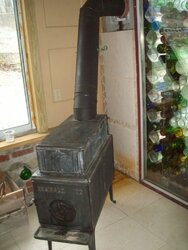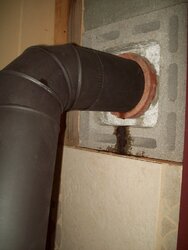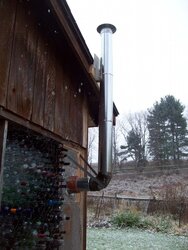The first fire in the stove created fumes, with a liquid coming down the edge of the chimney and puddled on the floor. Wood burned slowly, but smoked out the chimney nicely. It still smells bad today with no fire and the overhead fan on. Is the 90 degree angle a problem?
new installation for old Reginald airtight stove
- Thread starter Dave's wife
- Start date
-
Active since 1995, Hearth.com is THE place on the internet for free information and advice about wood stoves, pellet stoves and other energy saving equipment.
We strive to provide opinions, articles, discussions and history related to Hearth Products and in a more general sense, energy issues.
We promote the EFFICIENT, RESPONSIBLE, CLEAN and SAFE use of all fuels, whether renewable or fossil.




